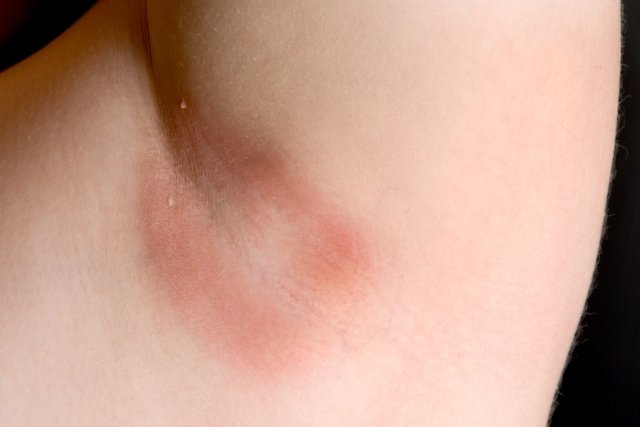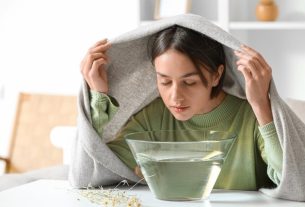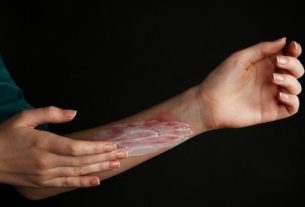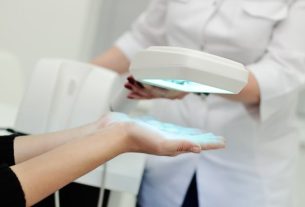Inverted psoriasis is a type of psoriasis that causes red spots to appear on the skin, especially in the folds, such as armpits, groin and the area under the breasts in women, being more common in overweight people.
The patches of inverted psoriasis, also known as inverse psoriasis, do not flake and can become more irritated by sweating or when you rub the area.
Although there is no treatment capable of curing inverted psoriasis, it is possible to alleviate the discomfort and even prevent the frequent appearance of spots through techniques that include the use of ointments, medicines or phototherapy sessions, for example, according to the guidance of the doctor. dermatologist.

Main symptoms
The main symptoms of inverted psoriasis are:
- Smooth, red spots on the skin;
- Stains that do not peel off;
- Fissure in the red spots, which can cause pain and bleeding.
The symptoms of inverted psoriasis appear in fold areas, such as the groin, armpits and under the breasts, and may become more intense after perspiration or friction in the area.
In some cases, the symptoms of inverted psoriasis can be confused with another skin problem, candidal intertrigo, and therefore it is very important to consult a dermatologist to confirm the diagnosis and begin the most appropriate treatment. See what candidal intertrigo is and how it is treated.
Possible causes
The causes of inverted psoriasis are not yet fully known, however, it is possible that it is caused by an imbalance in the immune system that ends up attacking the skin cells themselves, as happens in classic psoriasis.
Furthermore, the presence of moisture on the skin, caused by sweat, or repeated friction can aggravate skin inflammation. It is for this reason that this type of psoriasis is more common in obese people, due to the constant presence of moisture and friction in the skin folds.
How the treatment is carried out
Treatment for inverted psoriasis helps to alleviate symptoms, and is recommended by the dermatologist:
- Creams like corticosteroids with Hydrocortisone or Betamethasone, which quickly relieve skin inflammation, reducing redness and pain in the area. These creams should not be used more than indicated as they are easily absorbed and can cause several side effects;
- Antifungal creams with Clotrimazole or Fluconazole, which are used to eliminate fungal infections that are very common in affected areas;
- Calcipotriolwhich is a specific cream for psoriasis that contains a form of vitamin D that reduces the growth of skin cells, preventing local irritation;
- Phototherapy sessionswhich consists of applying ultraviolet radiation to the skin between 2 and 3 times a week to reduce irritation and alleviate symptoms.
These treatments can be used separately or combined, depending on how the skin reacts to each treatment. This way, the dermatologist can test each treatment over time and adapt it according to the intensity of the symptoms.
Home treatment
Home treatment for inverted psoriasis involves keeping the skin clean and not very moist, as this will prevent the appearance of symptoms. Furthermore, it is important to have an anti-inflammatory diet, which also helps prevent symptoms from appearing. Therefore, it is recommended to increase the consumption of fiber, fruits and vegetables. See more details on nutrition for psoriasis.
Check out the video below for more tips to alleviate and prevent psoriasis symptoms:

Sign up for our newsletter and stay up to date with exclusive news
that can transform your routine!
Warning: Undefined array key "title" in /home/storelat/public_html/wp-content/plugins/link-whisper-premium/templates/frontend/related-posts.php on line 12
Warning: Undefined array key "title_tag" in /home/storelat/public_html/wp-content/plugins/link-whisper-premium/templates/frontend/related-posts.php on line 13



